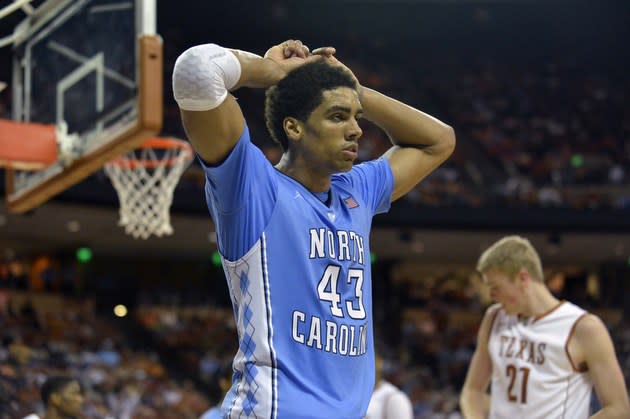Preseason fears about North Carolina appear to be coming true so far
With Duke distancing itself from its peers with an undefeated start that includes a handful of notable wins, the biggest question in ACC circles this week has been who the league's second best team is.
One thing is clear after Wednesday night: Right now, it's not North Carolina.
A discouraging 85-67 road loss at previously struggling Texas further shined the spotlight on how little the No. 23 Tar Heels have accomplished so far this season. They've now lost by double digits to Butler, Indiana and Texas — the only three top 100 RPI teams they've faced — and their most credible victory came by six against East Carolina.
It's not entirely shocking North Carolina is struggling after losing four first-round draft picks to the NBA, but most thought the Tar Heels would be further along at this point. Here's a look at the areas they need to improve to contend for a top three ACC finish and an NCAA tournament bid:
1. Ineffective defense
North Carolina teams coached by Roy Williams typically are better known for their scoring blitzes than their stinginess, but this year's Tar Heels are especially porous defensively. Not only do they surrender an ACC-worst 70.3 points per game and 83.3 points per game in their three losses, they seem to have a different issue defensively every night.
They did a poor job fighting through screens in an 82-71 loss to Butler, enabling the Bulldogs to sink 12 of 25 3s. They were slow to get back in transition in an 83-59 loss at Indiana, time and time again getting beaten down the floor by Cody Zeller. And they were mediocre in all areas the past two games, failing to force a turnover-prone Texas team into enough mistakes only three days after allowing East Carolina to score 61 second-half points, the most by an opponent in a half in the Williams era.
Why is North Carolina worse defensively this season? Some of it is inconsistent effort or the young big men's lack of understanding the rotations, but some of it is also a result of the Tar Heels' personnel. Aside from Dexter Strickland, none of North Carolina's guards are particularly quick laterally, making them prone to being beaten off the dribble. And since the Tar Heels only have one player 6-foot-10 or taller, freshman Joel James, they don't have a rim protector the way they did when John Henson was on the roster.
2. Erratic half-court offense
When North Carolina can't force turnovers or run off opposing teams' missed shots, it has to rely on its half-court offense to outscore its foes. That's increasingly dicey since this Tar Heels team isn't as potent as previous ones.
They put the ball in the hands of a freshman point guard who is talented but prone to bad shots or poor decisions with the ball in his hands. They don't have any interior scorers besides James Michael McAdoo, who is more adept at mid-range jumpers and attacking the rim than he is scoring with his back to the basket. And while they have a bevy of dangerous 3-point shooters, freeing them for open looks has proven difficult because opposing coaches crowd them and play them to drive.
Also problematic for the Tar Heels has been their inability to get to the foul line. Their eighth in the ACC in free throws attempted and last in free throw rate mostly because few players on the roster are capable of attacking the rim besides McAdoo and senior guard Dexter Strickland in transition.
3. Over-reliance on offensive rebounding
The way in which North Carolina has overcome its erratic offense and mediocre defense is by dominating the offensive glass early in the season. The Tar Heels grab the fourth-most offensive rebounds in the country, which is admittedly boosted by the fast tempo they play at but also is a product of their springy big men crashing the boards with abandon in an effort to put-back every errant shot.
The problem with that strategy is offensive rebounds haven't been so plentiful against teams who can match their size. They've averaged 11.7 offensive boards in losses against Indiana, Butler and Texas compared to 18.1 per game in their eight victories.
With ACC play only weeks away, North Carolina can't expect to pull down 18-20 offensive boards per game in order to make up for its other shortcomings. As a result, the Tar Heels are either going to have to improve defensively, develop their young big men or find a way to free their shooters in order to compensate.



